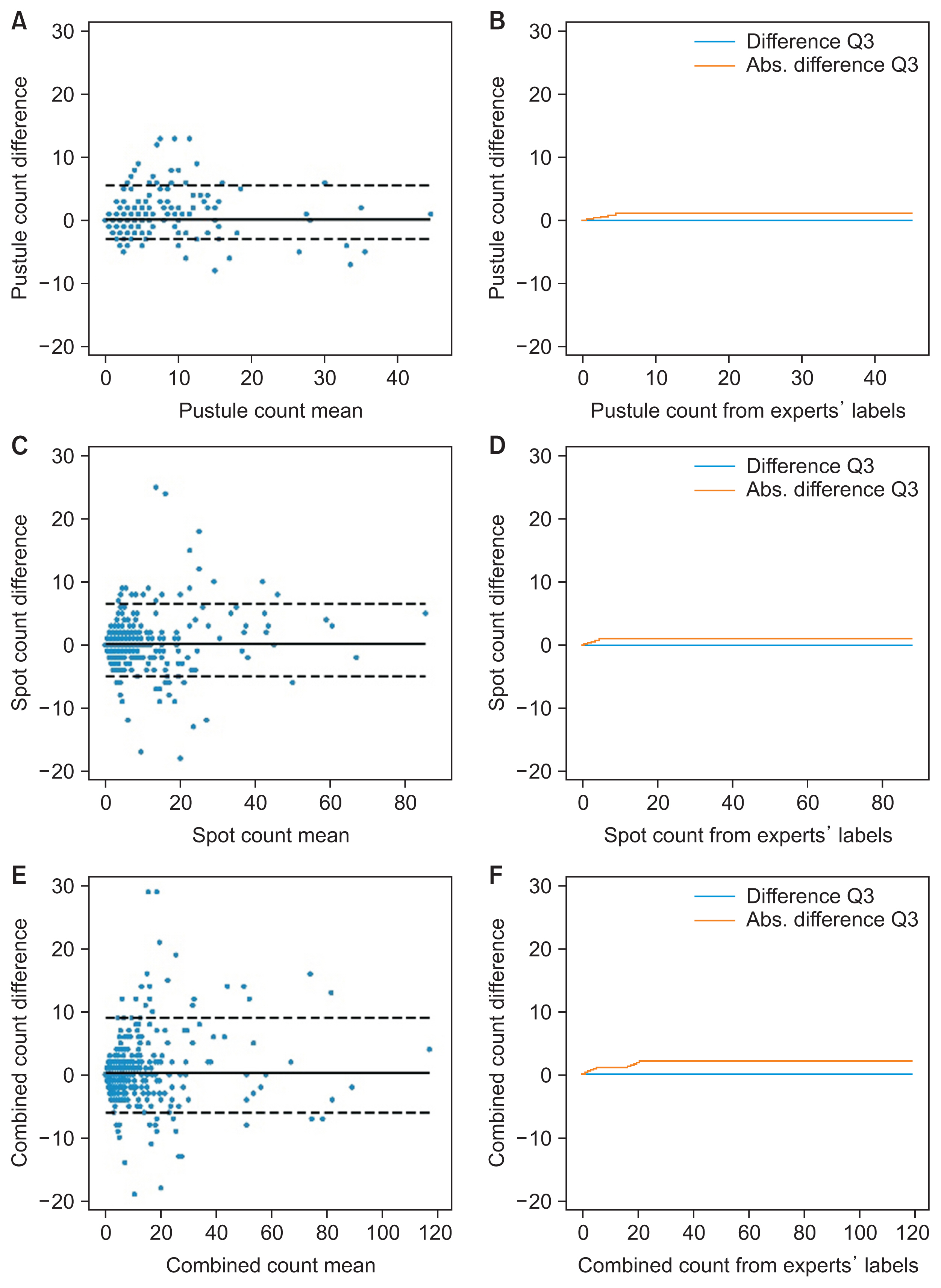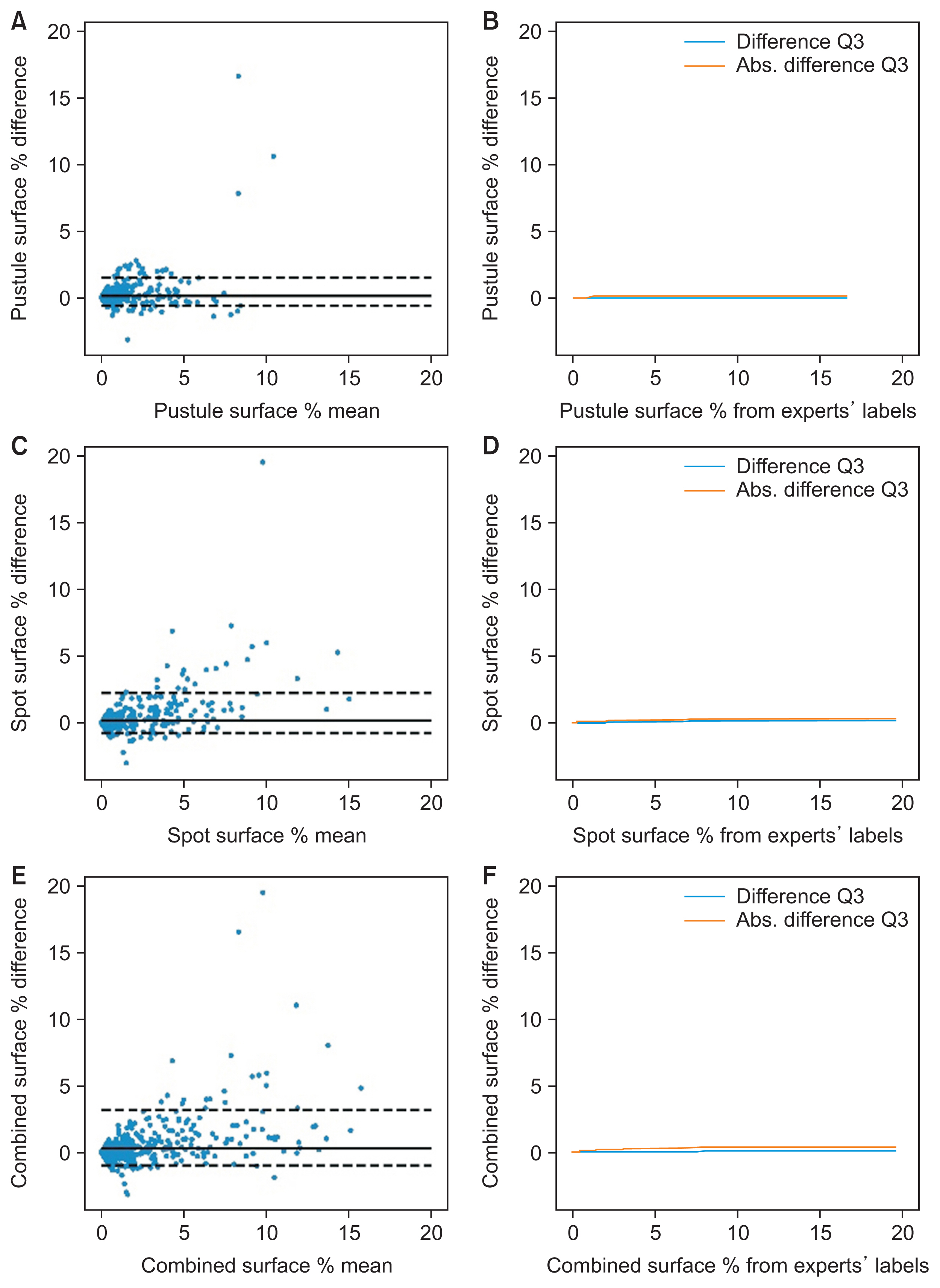2. Puzenat E, Bronsard V, Prey S, Gourraud PA, Aractingi S, Bagot M, et al. What are the best outcome measures for assessing plaque psoriasis severity? A systematic review of the literature. J Eur Acad Dermatol Venereol 2010 24(Suppl 2):10-6.
https://doi.org/10.1111/j.1468-3083.2009.03562.x

3. Bhushan M, Burden AD, McElhone K, James R, Vanhoutte FP, Griffiths CE. Oral liarozole in the treatment of palmoplantar pustular psoriasis: a randomized, double-blind, placebo-controlled study. Br J Dermatol 2001 145(4):546-53.
https://doi.org/10.1046/j.1365-2133.2001.04411.x


4. Kolios AG, French LE, Navarini AA. Detection of small changes in psoriasis intensity with PrecisePASI. Dermatology 2015 230(4):314-7.
https://doi.org/10.1159/000371811


7. Meienberger N, Anzengruber F, Amruthalingam L, Christen R, Koller T, Maul JT, et al. Observer-independent assessment of psoriasis-affected area using machine learning. J Eur Acad Dermatol Venereol 2020 34(6):1362-8.
https://doi.org/10.1111/jdv.16002


8. Andermatt S, Horvath A, Pezold S, Cattin P. Pathology segmentation using distributional differences to images of healthy origin. In: Crimi A, Bakas S, Kuijf H, Keyvan F, Reyes M, van Walsum T, editors. Brainlesion: glioma, multiple sclerosis, stroke and traumatic brain injuries. Cham, Switzerland: Springer; 2018. p. 228-38.
https://doi.org/10.1007/978-3-030-11723-8_23

9. Furger F, Amruthalingam L, Navarini A, Pouly M. Applications of generative adversarial networks to dermatologic imaging. In: Schilling FP, Stadelmann T, editors. Artificial neural networks in pattern recognition. Cham, Switzerland: Springer; 2020. p. 187-99.
https://doi.org/10.1007/978-3-030-58309-5_15

10. Ronneberger O, Fischer P, Brox T. U-Net: convolutional networks for biomedical image segmentation. In: Navab N, Hornegger J, Wells W, Frangi A, editors. Medical image computing and computer-assisted intervention – MICCAI 2015. Cham, Switzerland: Springer; 2015. p. 234-41.
https://doi.org/10.1007/978-3-319-24574-4_28

11. He K, Zhang X, Ren S, Sun J. Deep residual learning for image recognition. Proceedings of the IEEE conference on computer vision and pattern recognition; 2016 Jun 26–Jul 1. Las Vegas, NV; p. 770-8.

12. Deng J, Dong W, Socher R, Li LJ, Li K, Fei-Fei L. ImageNet: a large-scale hierarchical image database. Proceedings of 2009 IEEE Conference on Computer Vision and Pattern Recognition; 2009 Jun 20–25. Miami, FL; p. 248-55.
https://doi.org/10.1109/CVPR.2009.5206848

13. Smith LN. A disciplined approach to neural network hyper-parameters: Part 1--learning rate, batch size, momentum, and weight decay [Internet]. Ithaca (NY): arXiv.org; 2018 [cited at 2022 Jul 20]. Available from:
https://arxiv.org/abs/1803.09820

16. Zhu W, Huang Y, Zeng L, Chen X, Liu Y, Qian Z, et al. AnatomyNet: deep learning for fast and fully automated whole-volume segmentation of head and neck anatomy. Med Phys 2019 46(2):576-89.
https://doi.org/10.1002/mp.13300


17. El Jurdi R, Petitjean C, Honeine P, Cheplygina V, Abdallah F. High-level prior-based loss functions for medical image segmentation: a survey. Comput Vis Image Underst 2021 210:103248.
https://doi.org/10.1016/j.cviu.2021.103248

18. Paszke A, Gross S, Massa F, Lerer A, Bradbury J, Chanan G, et al. PyTorch: an imperative style, high-performance deep learning library. Adv Neural Inf Process Syst 2019;32:8024-35.

20. van Stralen KJ, Dekker FW, Zoccali C, Jager KJ. Measuring agreement, more complicated than it seems. Nephron Clin Pract 2012 120(3):c162-7.
https://doi.org/10.1159/000337798


22. Wu X, Yan Y, Zhao S, Kuang Y, Ge S, Wang K, et al. Automatic severity rating for improved psoriasis treatment. Medical image computing and computer assisted intervention – MICCAI 2021. Cham, Switzerland: Springer; 2021. p. 185-94.
https://doi.org/10.1007/978-3-030-87234-2_18

23. Pal A, Chaturvedi A, Garain U, Chandra A, Chatterjee R, Senapati S. Severity assessment of psoriatic plaques using deep CNN based ordinal classification. OR 20 Context-aware operating theaters, computer assisted robotic endoscopy, clinical image-based procedures, and skin image analysis. Cham, Switzerland: Springer; 2018. p. 252-9.
https://doi.org/10.1007/978-3-030-01201-4_27

24. Cazzolato MT, Ramos JS, Rodrigues LS, Scabora LC, Chino DY, Jorge AE, et al. The UTrack framework for segmenting and measuring dermatological ulcers through telemedicine. Comput Biol Med 2021 134:104489.
https://doi.org/10.1016/j.compbiomed.2021.104489


27. Schnurle S, Pouly M, vor der Bruck T, Navarini A, Koller T. On using support vector machines for the detection and quantification of hand eczema. Proceedings of the 9th International Conference on Agents and Artificial Intelligence (ICAART); 2017 Feb 24–26. Porto, Portugal; p. 75-84.

28. Raj R, Londhe ND, Sonawane RS. Deep learning based multi-segmentation for automatic estimation of psoriasis area score. Proceedings of 2021, 8th International Conference on Signal Processing and Integrated Networks (SPIN); 2021 Aug 26–27. Noida, India; p. 1137-42.
https://doi.org/10.1109/SPIN52536.2021.9566039

30. Finnane A, Curiel-Lewandrowski C, Wimberley G, Caffery L, Katragadda C, Halpern A, et al. Proposed technical guidelines for the acquisition of clinical images of skin-related conditions. JAMA Dermatol 2017 153(5):453-7.
https://doi.org/10.1001/jamadermatol.2016.6214














